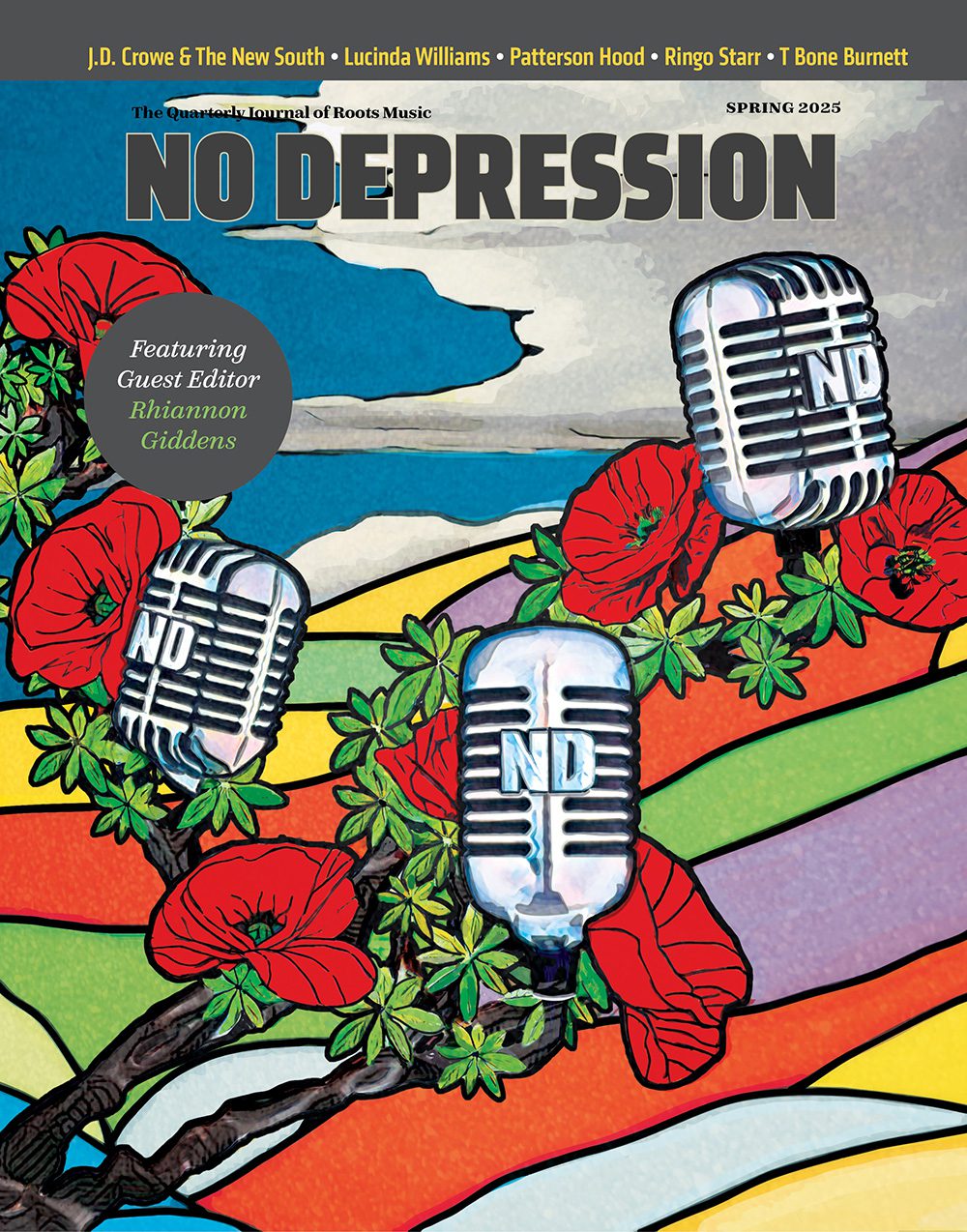Jimmie Dale Gilmore – Defying gravity
“Austin was the place,” Gilmore continues. “It was a quality audience. Lots of professional and political people frequented the Alamo [a lounge in the Alamo Hotel], and then Emmajoe’s later on. Butch and I were sort of the two mainstays, along with Guy Clark and Townes Van Zandt, at those places, and at the old Split Rail. Younger singers like Nanci Griffith, Lyle Lovett, Robert Earl Keen and Lucinda Williams would usually open shows for us.”
Despite his return to the world of music, Gilmore didn’t seriously consider making records again until the late ’80s. “Rounder approached me pretty early on,” he says, “but I just wasn’t ambitious in the music business sense.” And music wasn’t the only thing on his mind at the time: In addition to his ongoing study of philosophy, something he often pursued “to the point of distraction,” Gilmore also had begun dating his future wife, Janet Branch (now Gilmore). He didn’t release his solo debut, Fair And Square (on HighTone), until 16 years after the aborted release of the Flatlanders record.
Ely produced the album, a fairly straightforward honky-tonk outing galvanized by the steel playing of Lloyd Maines, the camaraderie of old friends, and a clutch of first-rate songs. Most notable among the last of these were Ely’s “Honky Tonk Masquerade”, Hancock’s “Just A Wave”, Van Zandt’s “White Freight Liner Blues”, and David Halley’s gorgeous “Rain Just Falls”.
The album’s self-titled successor, made with Nashville pros (and Maines) and released the following year, evinces more muscle and clarity in the production. It also boasts swell versions of “Dallas” and Hancock’s “Red Chevrolet” but still finds Gilmore operating within a somewhat limited, albeit contemporary-sounding, hard-country compass. Like Fair And Square, it was a good record, but it wasn’t “out there” enough to enable Gilmore’s voice and spirit to soar.
This was hardly the case with the three increasingly progressive albums that followed (not counting Gilmore’s delightful live disc with Hancock, a project culled from a pair of Australian dates). The folkie twang of the first disc in the triptych, After Awhile, Gilmore’s 1991 major-label debut for Elektra’s American Explorer series, wasn’t much of a musical departure, but, unlike its predecessors, it contained no trad-country covers. In fact, apart from Hancock’s apropos “My Mind’s Got A Mind Of Its Own”, all of the songs on the album were Gilmore originals or co-writes, most of them betraying a pronounced philosophical bent.
But where After Awhile cohered around the verbal flowering of Gilmore’s cosmic consciousness, 1993’s Spinning Around The Sun nurtured that sensibility with equally expansive music: The disc tapped the lush pop-romanticism of Roy Orbison, minus the dread. Gilmore’s next album, the T Bone Burnett-produced Braver Newer World, took this approach into art-rock territory; while not without its share of epiphanies, the record ultimately proved a case of mistaking the finger for the moon.
Gilmore did some acting and soundtrack work after the release of Braver Newer World. He had a bit part in the Coen Brothers movie The Big Lebowski (he had previously appeared in Chippy, a musical that also starred Lubbock cohorts Terry Allen, Jo Carol Pierce, and fellow Flatlanders Ely and Hancock). His version of “Just A Wave” appeared in Deep In The Heart Of Texas, and he recorded a couple of Lefty Frizzell covers for the movie Traveler. In 1998, Gilmore also reunited with Hancock and Ely, where, under the Flatlanders moniker, they contributed a new recording, “The South Wind Of Summer,” to the soundtrack for The Horse Whisperer.
Needless to say, this last cameo has had tongues wagging about the prospect of a Flatlanders reunion. And not without reason: Besides playing a dozen or so dates this month, Gilmore, Hancock and Ely have been back in the studio together. “We’re writing some stuff and recording it now, just really for the fun of it,” Ely confirmed. “We don’t want to call it ‘making a record’ because that implies the music business. We want to keep our work together kind of sacred.”
“We just love getting together,” says Hancock. “We go out to Joe’s or Jimmie’s or whatever — you know, just to hang out. One night we were writing together and we each had little bits and pieces of ideas and such. Then, all of a sudden, these songs came popping out and we’re going, ‘Where did that come from? That’s like nothing that any of us would have written but you can still hear us all in it.'”
“I think that even from the beginning, we all knew that there was something really unusual about our playing together,” adds Gilmore. “We’ve always had more of an ethic of creativity than an ethic of success, whether in terms of money or of fame. It would be wonderful if we could capture something of that, something of what we are, on record, but that’s not our primary intent. We didn’t say, ‘We’ve got to make a record.’ It was more like, ‘Let’s do this and see what comes of it.’ Sometimes, what comes of it is laughing all night long and having some enchiladas. For us, that’s a success.”
This attitude that has served Gilmore well. It’s almost as if he’s taken the lines, “You’re just a wave, you’re not the water,” from Hancock’s metaphysical love song of the same name, and applied them to his career. As a solo artist and as a member of the Flatlanders, Gilmore is hardly a household name; to most people, the Flatlanders have been, as the title of their Rounder reissue attests, more a legend than a band.
Yet at this point, Gilmore seems perfectly content to be making ripples, however small, wherever he can. Indeed, he knows that no one can be the water, that the most any singer or picker can be — even Hank Williams or Elvis, despite the tides they’ve set in motion — is a wave among the vast currents of popular music. More importantly, he knows that the same is true of his place in the universe as well.
ND contributing editor Bill Friskics-Warren lives in Nashville and is a frequent contributor to the Washington Post, the Oxford American, and the Nashville Scene.




